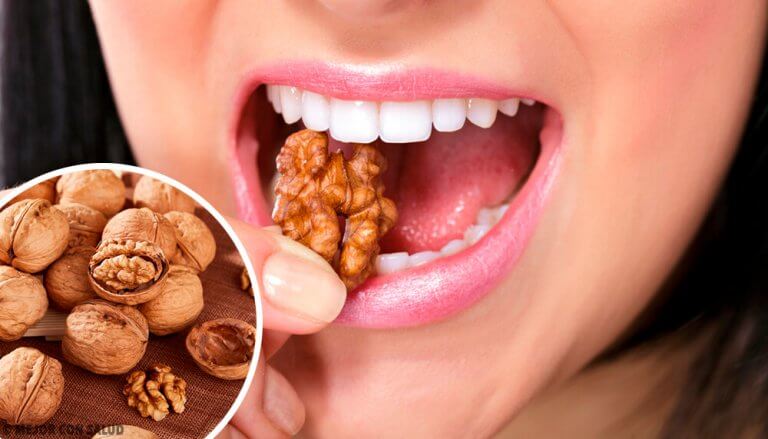Four Pieces Of Advice To Reduce Your Menstrual Flow

Our discharge protects the vagina from possible infections, cleanses it and moistens it. However, it can increase considerably during our periods, affecting women’s daily lives. Discover four pieces of advice to help reduce your menstrual flow.
Variations in the intensity of bleeding during periods can limit women’s quality of life.
Our body has certain levels of hormones, like estrogen for example, which determine the increase or decrease in vaginal flow during our days of ovulation. As a result, any changes in these levels directly affects our quality of life at that time of the month.
Advice to reduce your menstrual flow
The first thing you should do is consult a specialist. This way you can confirm whether your abundant flow is the consequence of a more significant inner imbalance. Then you can apply these pieces of advice to reduce it.
1. Improve your diet

Choose healthy foods full of nutrients, like proteins, iron-rich foods and dairy foods to obtain calcium. Iron plays an essential role in the formation of red blood cells and so an iron deficiency can cause abundant blood flow.
Vitamin C has a synergistic effect, because it is needed for efficient iron absorption. Include in your diet foods that contain both to fight menorrhagia. We suggest including in your diet:
- Walnuts
- Green vegetables
- Yogurt
- Cheese
- Oranges
- Strawberries
- Cherries
- Apricots
See also: 10 Incredible Properties of Nuts
2. Take supplements
Improve the effects of the food you eat by taking supplements of iron, magnesium, zinc, calcium and vitamin B6. You can take them in the form of multivitamins or take each one separately.
Iron supplements help reduce menstrual flow. Vitamin B processes excess estrogen in the liver and promotes the synthesis of prostaglandins, which are essential for reducing the formation of abnormal blood clots.
3. Make herbal teas

Many herbs have been used for millennia to control excessive uterine flow. They can also correct hormonal imbalances and control menorrhagia.
Drink the following natural plant infusions. They are ideal for rapid relief, for progesterone production and to relax the uterine muscles:
- Lady’s mantle
- Shepherd’s purse
- Agnus castus
- Cinnamon
- Red raspberry leaves.
4. Apply ice compresses
The cold reduces bleeding and relieves the pain and inflammation, because it makes the blood vessels constrict which reduces the loss of blood.
You should place a bag full of pieces of ice on your abdomen. Leave it for no more than 20 minutes, remove it and then use it again 2 to 4 hours later. Do this for as long as symptoms persist. If you feel too cold or your skin goes numb, remove the compress.
We recommend you read: 8 Foods to Avoid When You Have Inflammation
What is normal?

Knowing what quantity of flow is normal and what pattern of bleeding should be expected across each cycle is a subject of frequent concern. Different variations can be identified by considering the frequency, intensity and duration of menstruation.
The frequency should be every 21 to 35 days. The normal intensity is between 30 and 80 ml and the ideal duration is 3 to 7 days. Variations across the month include ovulatory bleeding which is a very light flow halfway through the cycle of a brown color.
Other variations include: polymenorrhea (menstruating for more than 7 days), oligomenorrhea (cycles of less than 3 days), and opsomenorrhea (intervals longer than 35 days).
There’s also hypermenorrhea (bleeding more than 80 ml/cycle) and hypomenorrhea (reduction in the quantity of blood). Each variation should be studied and dealt with on an individual basis by a specialist.
Health conditions
It is wise to take control measures because abundant or prolonged menstrual flow affects your daily performance, including physical activities and emotional health, as well as social life.
It can also cause serious health problems, like anemia due to iron deficiency. In general, menstrual bleeding is accompanied by dizziness, tiredness, headaches, cramps, shortness of breath, fuzzy vision and arrhythmia.
If the intensity of your cycle is not the result of an illness that requires medical intervention, follow these 4 pieces of advice to reduce your menstrual flow, so that you can forget about having a hard time on those days of the month and enjoy the pleasure of being a woman.
All cited sources were thoroughly reviewed by our team to ensure their quality, reliability, currency, and validity. The bibliography of this article was considered reliable and of academic or scientific accuracy.
- Enciso FB, Crespo LP, Acuña JC. Clasificación y nomenclatura de las alteraciones menstruales. Ginecología y Obstetricia de México 2007; 75 (10): 641-651. Available at: https://nietoeditores.com.mx/nieto/Ginecologia/2007/numero%2010/femego10_octubre.pdf#page=73. Accessed 11/27, 2018.
- Mayo Clinic. Menorragia (sangrado menstrual intenso). 2018. Available at: https://www.mayoclinic.org/es-es/diseases-conditions/menorrhagia/symptoms-causes/syc-20352829. Accessed 11/27, 2018.
- Zanin L, Paez A, Correa C, De Bortoli M. Ciclo menstrual: sintomatología y regularidad del estilo de vida diario. Fundamentos en Humanidades 2011; 12 (24). Available at: https://www.redalyc.org/html/184/18426920004/. Accessed 11/27, 2018.
- Centros para el Control y la Prevención de Enfermedades. Sangrado menstrual abundante. (2020). recuperado el 19 de enero de 2021. https://www.cdc.gov/ncbddd/spanish/blooddisorders/women/menorrhagia.html
- Livdans-Forret, A. B., Harvey, P. J., & Larkin-Thier, S. M. (2007). Menorrhagia: a synopsis of management focusing on herbal and nutritional supplements, and chiropractic. The Journal of the Canadian Chiropractic Association, 51(4), 235–246.
- National Health Services. Heavy Periods. (2018). Recuperado el 19 de enero de 2021. https://www.nhs.uk/conditions/heavy-periods/treatment/
This text is provided for informational purposes only and does not replace consultation with a professional. If in doubt, consult your specialist.








